Childhood or zero to 3 months
Puppies, like all mammals, are born helpless, blind and deaf. During this period, they are completely dependent on their mother, who is also very attached to the puppies and does not leave them for a moment. Taking the bitch out for a walk during this period is a big problem because she cannot leave the suckling puppies...
In the first 4-5 days of life, puppies show only one reaction to cold, pain, and hunger. They begin to actively move and squeak. And the mother immediately rushes to the aid of her babies.
At this age, the mother licks the puppies and removes waste products after them - feces and urine. When artificially feeding, puppies often die because people do not know that after feeding puppies need to massage their tummies to stimulate digestion and further intestinal motility.
From 5 to 11 (sometimes up to 13) days, the puppies' ear canals and palpebral fissures open. Sense organs are formed. Puppies begin to rise on their paws, curl up in their sleep, itch, yawn - in a word, the usual adult behavioral clusters begin to form. And from this same time, puppies begin to actively move on to contacts with their littermates. The bitch is now more comfortable leaving them for a longer period.
From two weeks of age to approximately three weeks, puppies' motor activity increases. They enjoy exploring the world. They can already move actively and even play with each other. If during this period an unfamiliar object is encountered on the puppy’s path, the puppy sniffs it carefully and then moves back, under the reliable protection of its mother. When puppies start teething (approximately 30-35 days from birth), they can already switch to regular food. Which, however, must correspond to the age of the kids in order to successfully digest it.
Typically, puppies are given to new owners at the age of 1.5 months, when the puppies can already survive without mother's milk and have a certain degree of socialization. From this moment on, the owner takes on the role of mother. Up to three months there is an active period of adaptation of a grown puppy to external life.
Preparing for childbirth
After two months of pregnancy, you notice that your pet is acting restless - this means that the Chihauhua may give birth in the near future. You don’t need to panic - you just need to take all the necessary measures and organize conditions in which a Chihuahua can give birth without endangering the life of the puppies and its health. Below we will talk about what steps you need to take and what you need to take care of.
Anxiety in a pregnant bitch is the first sign of approaching labor
First, try to agree with the veterinarian about his presence - this is especially important if your dog gives birth for the first time. Next, think about choosing a place - it is important that it excludes any irritants, noise and the appearance of strangers. When such dogs give birth, they should be protected from stress and unnecessary anxiety.
In the selected location, install the maternity box so that it is not located near heating devices or drafts. Approaches to it should be absolutely free, so that you have the opportunity to come to the aid of your pet at any time.
All this will need to be organized two weeks before the upcoming birth - the expectant mother should have time to get used to the new place and feel comfortable and safe there. The day before giving birth, lay out a clean oilcloth and bedding in the box, which you can later throw away.
In addition to all this, you will need to prepare a place where newborn Chihuahuas will live with their mother - they can live in a box for about 14 more days. They will be comfortable at a temperature of about 280C - after two weeks you can lower the temperature by 60C.
A special place should be reserved for the young mother and puppies
How beautiful this world is
Unfortunately, many owners believe that small puppies should be isolated from other, older dogs. And they make a huge mistake in this, which then costs the dog its entire life.
Neonatal stage: first time after birth
The first days after birth, puppies are absolutely helpless and completely dependent on their mother. Puppies' eyes and ears are closed at birth, but they are sensitive to touch and smell. Puppies' eyes open only on days 10-14, but until the transitional stage begins, dogs cannot respond to light and movement. These days, babies are constantly looking for their mother and, when separated from her, they whine, crawl and turn their heads.
Feeding at this stage is limited to breast milk. According to experts, constant short contact with the puppy during this period can have a positive effect on its behavior.
Note that the puppy must receive the first portion of milk from the mother no later than 24 hours after birth. It contains antibodies and other immune cells that help protect newborn puppies from disease.
Feeding newborn puppies
Puppies often do not gain weight in the first few days.
Puppies are born with an innate sucking reflex. However, weak babies who are unable to latch on to the nipple themselves must be held until they have received their share of milk. Apply them to the fuller nipples. First, knead the bitch's chest and express the colostrum so that the puppy can smell it. So he will need to be fed for several days. Then the puppy will get a little stronger and will be able to feed on its own.
Useful information: Healthy babies know how to grasp the nipple tightly, they lift their tails up, sleep well, and have wet noses. If there are lethargic and inactive ones, they need to be shown to a veterinarian.
It is very important to weigh a newborn puppy and subsequently monitor how he gains weight and how much food he takes at a time . If the baby is very weak and cannot suck even a drop on his own, he will need to be fed every 1.5 hours from a pipette, syringe or pacifier. To do this, express the mother's milk and give it to the puppy little by little. For the first time, 1 milliliter will be enough.
When the puppy grows a little, increase the amount of milk to 5-10 milliliters. This can only be done after 2 weeks.
Often, in the first few days after birth, babies do not gain weight, and sometimes they can even lose a little weight. But after a couple of days, positive dynamics should appear. If this does not happen, it means that the bitch does not have enough milk to feed the children. You will have to additionally feed the growing body
Often the mother has an excess of milk that remains after feeding. To avoid congestive mastitis, regularly examine your dog's chest and express any excess. This may be due to the fact that she gave birth to only one puppy, which simply cannot suck all the milk. The nipples most commonly pulled by puppies can be swollen, hard, and hot. Owners who encounter a brood for the first time sometimes forget to examine the upper glands, which the babies do not touch. However, milk may also remain there; you need to keep an eye on this. Check all nipples regularly, massage them and express any remaining milk.
What to pay attention to
So now you know when puppies open their eyes. The formation of the retina ends by the 21st day. It is very important not to leave babies in bright light - it is harmful to the eyes. Puppies begin to see well at the age of four weeks.
If the puppy’s eyes have not yet opened, but look swollen, this is a reason to contact the veterinarian; an infection is possible. The help of a specialist will also be required in case of suppuration or redness.
Newborn puppies have bluish eyes. Later it will change to permanent. But if the eyes appear cloudy, whitish, or too blue, take your puppy to the vet.
We invite you to read: Bull Terrier: description of the breed with photos, character of the dog, care and how to choose a puppy
Health
A responsible breeder must take care of the health of puppies from birth. Animals must be carefully examined to rule out birth defects. If they are found and are not compatible with life, then the humane solution would be euthanasia.
Some breed standards require tail docking. This procedure must be performed at an early age - 2-4 days. It is during this period that docking is most easily tolerated, the animals do not experience suffering, and the wound heals in the shortest possible time. As a rule, this procedure is performed at home. If puppies are taken to the clinic, then you need to take a bitch with you who will calm and feed the babies.
At 2 and 4 weeks, deworming is carried out, and at 6-7 weeks of age, the first vaccination is given. The bitch is wormed along with the puppies. You should be wary of not only tapeworms and roundworms, but also heartworms.
We invite you to read: Are there tricolor cats in nature or only cats: interesting facts
Puppies leave home no earlier than a month, usually after activation, which occurs at 6-7 weeks. A veterinarian or specialist from the breed club examines the puppies, after which they receive the first document - a puppy.
Stages of mental and physical development of a puppy and how they affect subsequent behavior
The dog is a higher animal with a highly developed brain, which determines its rich behavioral repertoire. In terms of the level of brain development, canids (which includes the domestic dog) are only 3 steps lower than humans (only dolphins and primates are between us).
A dog’s behavior is formed due to two components: - innate programs (models) of behavior inherent in the entire species; - programs that are formed individually in each animal as a result of interaction with the environment (learning).
The ability to develop new forms of behavior that go beyond the rigid framework of instinctive models is the most successful adaptive mechanism of an animal to real conditions of existence. It is possible that it was thanks to this developed ability that ancient mammals, who did not occupy any serious position in the world of prehistoric animals, survived the global geological cataclysms that destroyed the dinosaurs and became the crown of the biological kingdom.
The higher the position on the evolutionary ladder an animal species occupies, the longer the period of post-uterine development lasts, because at this time the most complex neurochemical connections are formed in the cerebral cortex of a living creature, and innate programs are intertwined in the most amazing way with acquired ones. The hatched insect almost immediately becomes an adult individual, clearly following the hereditary behavioral algorithm. Within a few hours, a newborn fawn is able to follow its mother and move with the herd. A dog cub becomes a biological adult only at two years of age, and a human child at 16.
The physical and mental formation of a newborn puppy goes through several stages, each of which has its own characteristics and has a different impact on what the adult will become. In the scientific literature there is not yet a clearly agreed upon outline of the boundaries of these periods; sometimes one period overlaps with another.
The authoritative Russian scientist Elena Mychko, the author of the book “Dog Behavior” and several others, who has studied the behavior of dogs and wolves for many years, proposed the following classification and description of these stages.
PSYCHOPHYSIOLOGICAL STAGES OF PUPPY DEVELOPMENT
Neonatal period (newborn period)
in all, by the rapid growth and improvement of unconditioned reflex reactions.
During the first month of the postnatal period, the puppy turns from a completely helpless embryo into an animal more or less capable of independent existence.
In the first eight days of this period, puppies double their weight. By the end of the first period, they begin to walk and their eyes open. Behavior improves - games begin, defensive reactions arise.
Enormous morphological changes occur in the nervous system after birth. The brain of a newborn puppy is no more than 12 percent of the brain mass of an adult dog. It grows rapidly and by the end of the second month of the puppy it reaches three quarters, and by the end of the sixth month it reaches almost the full mass of the brain of an adult dog.
The brain of a newborn puppy also differs in its development. By the time of birth, those areas of the central nervous system that provide regulation of the functions necessary for its existence are best developed: digestion, breathing and sucking. The cerebral cortex of a newborn puppy already has well-developed main convolutions. However, nerve cells (neurons) are still very immature in the first days after birth.
During this period, puppies do not have the circadian rhythm of sleep and wakefulness characteristic of adults, associated with the alternation of day and night. In newborn puppies, periods of sleep are evenly interspersed with periods of wakefulness, i.e. sucking. Some differentiation of the periods of day and night by the puppy appears when his eyes begin to emerge well and he gradually begins to leave the den.
By the time of birth, the puppy has functioning olfactory, gustatory, skin-temperature and vestibular analyzers. The puppy's main reactions are a positive reaction to a warm, furry surface. A newly born puppy, still connected by the umbilical cord to the placenta, already begins its journey to the nipples and, having reached them, begins to suck. In the very first hours, this innate food activity becomes complex-reflex, “overgrown” with conditioned connections. Gradually, the puppy’s movements improve, he learns to find the milkiest nipples, and recognizes the smell of his mother.
In the absence of the mother, all the puppies gather together and sleep in a “huddle” - this helps them keep warm - the thermoregulation of newborns is still imperfect. This is the so-called boredom reaction.
Newborn puppies are unable to urinate or defecate on their own. The mother licks the puppies, thus massaging the sphincters, and eats all their secretions. If the puppies did everything on their own, unsanitary conditions would quickly arise in the nest, and thus it is always clean and dry. Transition period
The second period is transitional (21–35 days). Its beginning marks the emergence of interest in meat and other solid foods. At the same time, the puppy begins to chew; until now, the only response to any irritation of the oral cavity was sucking.
The transition from milk feeding to mixed feeding occurs at a time when the puppy’s olfactory, auditory and visual analyzers are already sufficiently mature to perceive and differentiate objects in the external world and form numerous conditioned reflexes. First of all, the puppy develops conditioned food reflexes, which ensure a complete act of feeding while he is still in the nest.
As his movements improve, he begins to separate from his mother and other puppies, leave the nest, and explore his surroundings. At this time, the puppy actively manifests innate indicative reactions, and conditioned defensive reflexes begin to form.
Period of primary socialization
The third period of life (35–80 days) is the period of primary socialization. At this point, the basic physiological functions have been formed, but the animal continues to undergo intensive growth. The nervous system of a puppy is very susceptible to the influences of both favorable and unfavorable environmental influences. This period is characterized by a high rate of formation of conditioned reflexes.
The motor activity of puppies sharply increases, and its daily rhythm is formed. The play and research activity of puppies is significantly enhanced. An orientation-exploratory reflex appears, called I.P. Pavlov’s “What is it?”, reaching its greatest intensity precisely during this period of ontogenesis. Puppies become wary, raise their ears and head when exposed to any stimuli, approach unfamiliar objects, lick, put in their mouths, and chew.
Manipulating surrounding objects is the most important condition for further improvement of various skills. Motor exercises have a beneficial effect on the development of the organs of movement and on the functioning of the heart, lungs, and brain of animals.
Positive and negative emotions play a big role in regulating the behavior of a growing puppy. Conditioned reflexes in puppies of this period of development, as mentioned above, are developed quickly, but are not retained in memory for long. Juvenile period
The fourth period is juvenile (over 12 weeks). During this period, the formation of typological features occurs. Before it starts, all puppies behave very similarly - they are sociable, playful, easily excitable and have practically no pronounced individual traits. Differences in the basic properties of the nervous system are detected by the end of the second month of life, but they acquire their clearest expression by three to four months.
Often puppies experience a passive-defensive reaction, which dramatically changes behavior and determines all subsequent characteristics of higher nervous activity. As the puppy assimilates the laws of the surrounding world, it decreases. Numerous experimental studies have shown that raising puppies in isolation contributed to the development of pronounced cowardice in them in the future. If a puppy has such a tendency during this period of ontogenesis, it is extremely important to diversify his environment in every possible way. Puberty
The fifth period is the period of puberty (after 7 months). At this point, the puppy's growth is basically complete.
CRITICAL PERIODS OF SOCIALIZATION
Socialization is understood as a multi-stage process during which the personality of a social animal is formed and connections are formed with its environment. Each stage of socialization is limited in time and has critical periods when innate behavioral programs are activated and completed through the acquisition of new conditioned reflexes, which are gradually brought to perfection through training. This process occurs at all behavioral levels: new needs and innate components of motivation are included. The animal grasps the basic patterns and cause-and-effect relationships of the surrounding world, the understanding of which it needs at this stage of development. If for some reason the stage is not completed (the hereditary program was turned on, but not completely completed), all further development of the dog as a social animal turns out to be flawed, the psyche is disturbed, and the behavior is abnormal. Although the stages or periods of socialization are rightfully called critical, it is impossible to strictly define their scope for the entire “domestic dog” species as a whole. The length of childhood can vary three to four times between different breeds. The periods given below are typical for most dogs of medium and large service breeds, since the features of their age-related physiology are most characteristic. First period of socialization
Begins after two weeks of age and continues until approximately eight weeks. The first and one of the most important events in the life of a social animal is imprinting, during which the image of its species is imprinted and - this is a feature of the dog - the image of its human partner. During imprinting, the puppy remembers its belonging to a certain species of animal, what the creatures look like, and with whom it will later find itself in close social relationships. It is extremely important that imprinting occurs not only on the image of the mother, but also on the person - this is what allows the dog to perceive the person as an older fellow tribesman. Moreover, very early weaned puppies that were raised by people perceive themselves as people. During late contacts with dogs, they communicate with them reluctantly, in a limited way, clearly not identifying themselves with these animals.
Capturing the image of the mother increases the young dog's craving for animals of the same breed as itself. From this image, the dog receives key characteristics of appearance and behavior to identify its future sexual partner. Although this is not of great importance for domestic dogs, it, in fact, serves as the primary mechanism for separating breeds that have diverged far in the course of evolution, and is a barrier that complicates interbreeding in such cases. For example, representatives of other breeds often simply do not perceive bulldogs, basset hounds, and greyhounds as dogs.
It should be noted that imprinting in dogs, unlike birds in which this phenomenon was first described, is not a one-step process. Moreover, there is evidence that humans are not the only species whose image can be imprinted by a dog as a “native” species. In some sheep farms, puppies are born in sheds where sheep are kept, and, as adults, perceive the sheep as a possible variant of their species.
Observations of puppies clearly show that during the first period of socialization the concept of “WE” is formed. A puppy remembers for the rest of his life what animals, including himself, should look like. At the same time, the puppy is maximally open to the world around him. This time of his life is characterized by the emergence and literally avalanche-like growth of two complex behavioral complexes: play and research inextricably linked with it. The number of contacts a puppy can enter into is large; of course, the nervous system gets tired very quickly, but it also recovers just as quickly. Who is not familiar with the picture: a small puppy fiddles with a toy, throws it, begins to tinker with its littermate, then rushes to run somewhere and suddenly, literally while running, falls and falls asleep; a short sleep gives way to another violent bout of activity.
Stage of social adaptation
This stage is very important for the development of the puppy. It is at this time that your pet gains basic skills and abilities that will remain with him for the rest of his life. At this time, the dog develops communication skills and learns about the world around him. At this time, it is necessary to give the pet the opportunity to encounter as many people, objects and life situations as possible that he will encounter throughout his life. For example, he will likely have to stay home alone, visit veterinary clinics, and travel in the car.
At about 3 weeks of age, the puppy begins to show fear in response to loud noises. In addition, he regularly tries to get up on his own and start wandering around. At this time, dogs usually make their first attempt to bark.
Dogs have 2 rows of teeth, just like humans, their baby teeth begin to fall out at this age.
At approximately six weeks of age, the puppy should be vaccinated for the first time. Experts recommend carrying out the second 4 weeks after the first. At 6-8 weeks it is necessary to wean your pet from mother's milk and begin to introduce him to 4-5 meals a day.
At 6-9 weeks, puppies usually leave their mother and go to a new home. Before purchasing a puppy, be sure to ask the breeder what vaccinations the puppy has already received and what parasite prevention measures have been taken. In addition, before bringing your pet into your home, you should consult a veterinarian and find out some details about the vaccination and castration schedule. This time is considered the main period of easy socialization, and therefore it is important for puppies to change their environment more often and meet new people to develop social skills.
At 8-12 weeks of age, the number of meals should be reduced to 3 per day.
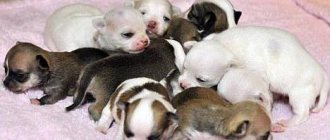
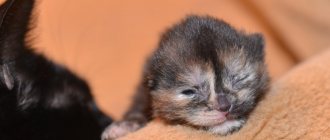

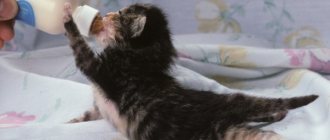

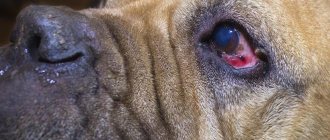


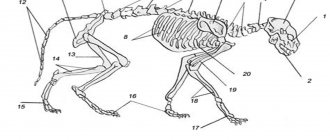
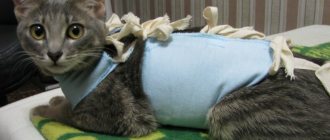

![Weight of a Caucasian Shepherd puppy by month [table]? How to feed](https://loshadka24.ru/wp-content/uploads/ves-shchenka-kavkazskoj-ovcharki-po-mesyacam-tablica-kak-kormit-330x140.jpg)